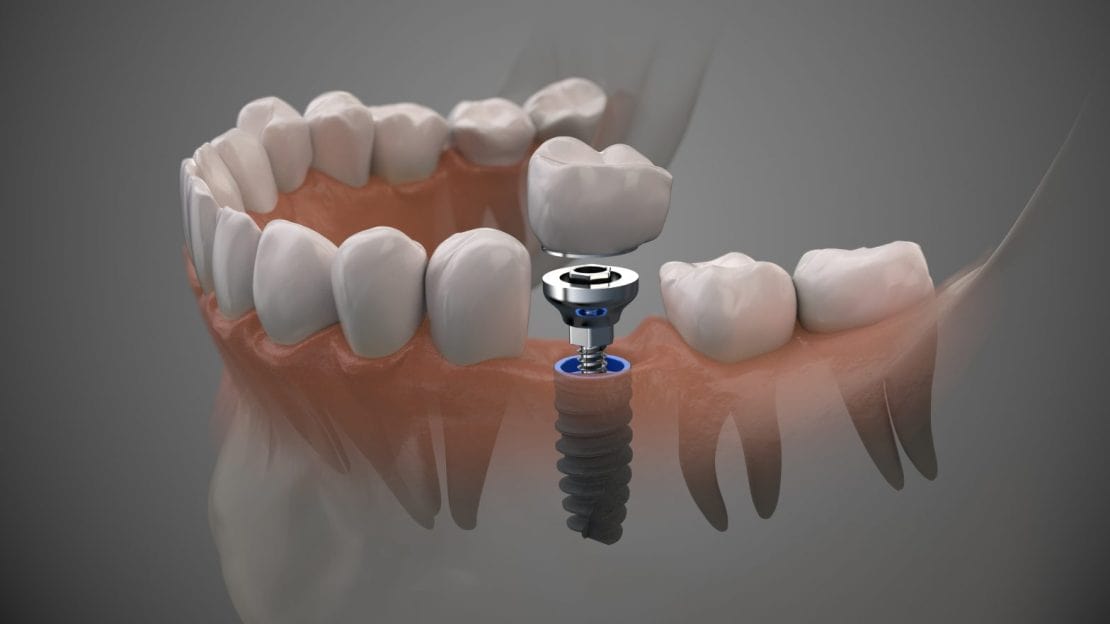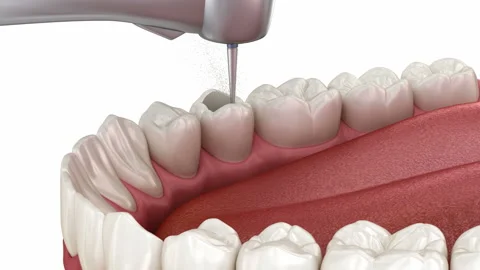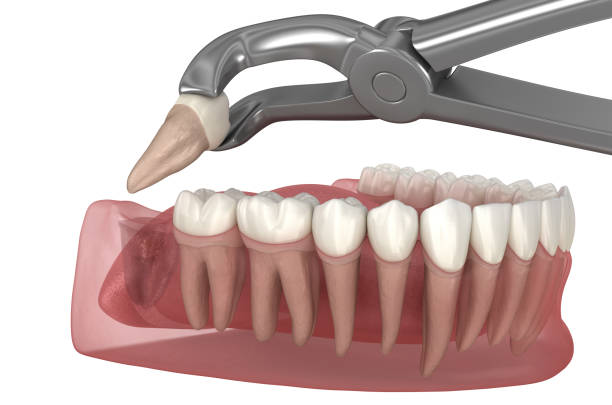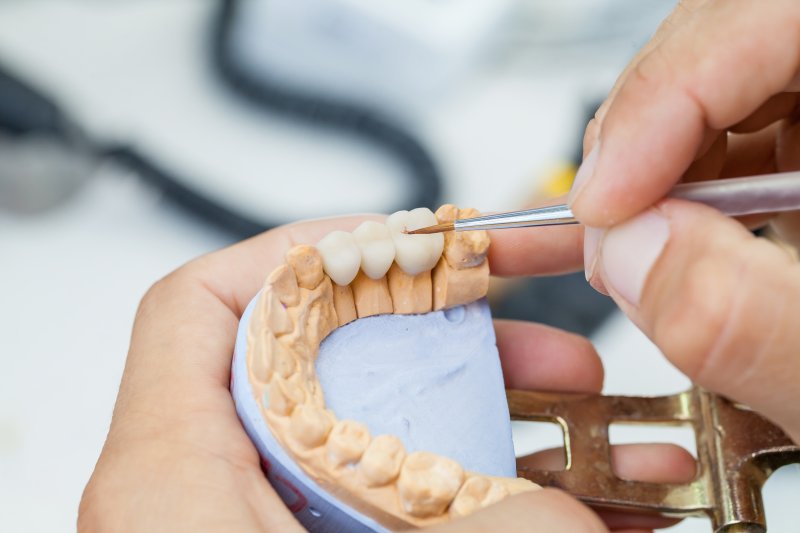
General Dentistry
General dentistry services encompass a wide range of procedures designed to promote oral health, address dental issues, and enhance smiles. Regular visits to a general dentist play a vital role in keeping teeth and gums healthy, preventing potential complications, and ensuring a confident and radiant smile.
- Diagnosis and Treatment Planning are fundamental aspects of general dentistry services that play a pivotal role in promoting oral health and enhancing smiles. During regular dental visits, a skilled general dentist conducts a comprehensive examination of the patient's oral cavity, utilizing state-of-the-art diagnostic tools such as X-rays and intraoral cameras to assess the condition of teeth, gums, and surrounding structures. Through this meticulous evaluation, the dentist can identify existing dental issues, such as cavities, gum disease, or dental abnormalities, and also spot potential complications that may arise if left untreated.
Once the diagnosis is complete, the general dentist works in close collaboration with the patient to develop a personalized treatment plan tailored to their specific needs and goals. This plan outlines the recommended procedures and interventions to address the identified dental problems effectively. The dentist takes the time to explain the proposed treatments in a clear and understandable manner, highlighting their benefits and any associated risks. This approach ensures that the patient is well-informed and actively involved in the decision-making process, instilling confidence and trust in the treatment plan. - Restorative care is a fundamental pillar of general dentistry aimed at repairing and revitalizing damaged or decayed teeth. When teeth suffer from cavities, fractures, or wear, restorative procedures are employed to restore their functionality, strength, and aesthetics. Dental fillings are a common restorative option for treating minor to moderate cavities, where the decayed portion of the tooth is removed, and the resulting space is filled with a durable tooth-colored material. This process not only halts the progression of decay but also restores the tooth's natural shape and function, blending seamlessly with the surrounding teeth.
In more extensive cases, dental crowns are utilized to cover and protect a severely damaged tooth. Custom-made to match the shape and color of the patient's natural teeth, dental crowns provide stability and strength to weakened teeth, preventing further damage and potential tooth loss. Additionally, dental bridges serve as an effective restorative solution for replacing missing teeth. By anchoring artificial teeth to adjacent healthy teeth, bridges restore the patient's ability to chew and speak comfortably, while also preserving the alignment of surrounding teeth. - Preventive care is the cornerstone of maintaining optimal oral health and preventing dental issues before they arise. Regular check-ups and cleanings with a general dentist are essential components of preventive care. During these appointments, the dentist performs thorough cleanings to remove plaque, tartar, and surface stains that regular brushing and flossing may miss. Additionally, they conduct a detailed examination to identify any signs of gum disease, cavities, or other potential dental problems.
Educating patients on proper oral hygiene practices is another crucial aspect of preventive care. General dentists provide valuable guidance on effective brushing and flossing techniques, as well as advice on maintaining a balanced diet for better oral health. By emphasizing preventive care, general dentistry empowers patients to take proactive steps in caring for their teeth and gums, helping them avoid the development of serious dental issues that can lead to discomfort, costly treatments, and potential tooth loss. Regular visits to a general dentist not only promote oral health but also contribute to an overall confident and radiant smile.
Diagnosis and Treatment Planning:
Restorative Care:
Preventive Care:

Cosmetic Dentistry
Cosmetic dentistry offers a diverse array of procedures aimed at improving the aesthetics of a person's smile. With the goal of creating a beautiful and confident smile, cosmetic dentistry services aim to improve the appearance of teeth, gums, and overall oral structures. These procedures go beyond addressing functional concerns and focus on enhancing the aesthetics of a person's smile.
- Teeth whitening is a popular cosmetic dentistry procedure designed to brighten and lighten the color of teeth that have become stained or discolored over time. It is a non-invasive treatment that can dramatically improve the appearance of a person's smile. There are two main types of teeth whitening: in-office whitening and at-home whitening kits.
In-office whitening is performed by a dental professional in the dental clinic. A high-concentration bleaching gel is applied to the teeth, and a special light or laser may be used to enhance the whitening effect. The procedure usually takes about an hour and can result in immediate and significant improvements in tooth color. - Composite bonding is a technique used to repair chipped, cracked, or discolored teeth, as well as to close gaps between teeth. It involves the application of a tooth-colored composite resin material directly to the affected tooth. The dentist sculpts and shapes the resin to match the natural contours of the tooth, and then it is hardened using a special light. The result is a seamless and aesthetically pleasing restoration that blends in with the surrounding teeth.
Composite bonding is a conservative approach to improve the appearance of teeth and is often preferred for minor cosmetic issues, as it requires little to no enamel removal compared to other treatments like veneers. - Dental veneers are thin, custom-made shells typically made of porcelain or composite resin that are bonded to the front surface of the teeth. Veneers are used to correct a variety of cosmetic imperfections, such as severely stained or discolored teeth, chipped or worn teeth, misaligned teeth, and gaps between teeth.
The procedure involves a small amount of enamel removal from the front of the teeth to create space for the veneers. Once the teeth are prepared, impressions are taken, and the veneers are fabricated in a dental laboratory. During a subsequent appointment, the veneers are bonded to the teeth using a strong adhesive, resulting in a transformed and attractive smile. - Dental crowns, also known as caps, are restorations that encase the entire visible portion of a damaged or severely decayed tooth above the gum line. While they serve a functional purpose to strengthen and protect weakened teeth, they also have cosmetic benefits, improving the tooth's appearance.
Crowns can be made from various materials, including porcelain, ceramic, metal, or a combination of materials. Porcelain crowns are popular for their ability to closely resemble the natural color and translucency of teeth, making them an excellent choice for restoring front teeth. Dental crowns are often recommended when a tooth is extensively damaged or has undergone root canal treatment. They not only restore the tooth's strength and functionality but also enhance its aesthetic appearance, helping to create a more harmonious smile.
Teeth Whitening:
Composite Bonding:
Veneers:
Dental Crowns:

Invisalign®
Invisalign® is the clear way to straighten your teeth. It gradually moves your teeth through a series of custom-made, removable, nearly invisible aligners. You can eat anything you want and it is removable for good hygiene. Invisalign® makes it possible to do virtually everything regular braces do, but do it with far more comfort, fewer appointments, no eating restrictions, and without anyone noticing.
- Instead of using wire and brackets, Invisalign® uses smooth, clear plastic trays -- called aligners -- which are virtually invisible. No need to hide your smile while straightening your teeth. Gradual and Precise Tooth Movement: The clear aligners work gradually to shift teeth into the desired positions. As patients progress through the treatment plan, new sets of aligners are provided to continue the gentle adjustment of teeth, achieving precise and predictable results.
With the ability to remove the aligners, maintaining good oral hygiene becomes more manageable. Patients can brush and floss their teeth as usual, preventing the buildup of plaque and ensuring healthier gums and teeth throughout the treatment.
In many cases, Invisalign treatment requires fewer visits to the orthodontist compared to traditional braces. Patients receive multiple sets of aligners at once and can switch to the next set at home, reducing the need for frequent office appointments. - The smooth trays do not cause the discomfort & abrasions associated with the wire & brackets used with regular metal braces ... which also means less time at the dentist getting adjustments.
- Invisalign is an excellent option for many individuals seeking orthodontic treatment, but its suitability depends on various factors. An orthodontist can determine if Invisalign is the right choice based on factors such as the severity of the orthodontic issue, the patient's age, and their commitment to wearing the aligners as prescribed.
To discover if Invisalign® is right for you, please call Dr. Nawaz at (703) 430-3838. For more information, please visit the Invisalign website!
Virtually Invisible:
Comfortable:
Is Invisalign Right for Me?

Implants
Dental implants are titanium posts surgically inserted into the jawbone to replace missing teeth, providing a stable foundation for dental restorations. They offer a durable, natural-looking solution that allows individuals to regain the functionality and appearance of their original teeth. With proper care, dental implants can last for many years, making them a popular and effective option for restoring smiles.
- Initial Assessment: The journey begins with a comprehensive oral examination and a thorough evaluation of the patient's dental and medical history. X-rays, CT scans, or other imaging techniques may be used to assess the jawbone's density and determine the optimal placement of the implants.
Surgical Placement: During the surgical procedure, the dental implant, usually made of titanium, is precisely positioned into the jawbone at the site of the missing tooth. The dentist or oral surgeon creates a small incision in the gum tissue to access the underlying bone. The implant is then carefully inserted into the bone, and the incision is sutured closed.
Osseointegration: Following the implant placement, a critical phase called osseointegration occurs. Over the next several months, the jawbone fuses with the titanium implant, effectively integrating it into the bone. This process is essential as it ensures the stability and strength of the implant to withstand biting and chewing forces.
Abutment Placement: Once osseointegration is complete, a minor surgery is performed to place an abutment on top of the dental implant. The abutment acts as a connector between the implant and the dental restoration (crown, bridge, or denture) that will be attached later.
Restoration: After the gums heal around the abutment, the final step involves attaching the custom-made dental restoration. This restoration can be a crown for a single missing tooth, a bridge for multiple adjacent missing teeth, or a denture for a full arch replacement. The restoration is carefully crafted to match the color, shape, and size of the natural teeth, creating a seamless and aesthetically pleasing smile. - While dental implants offer a remarkably durable and long-lasting solution for tooth replacement, the term "permanent" can be somewhat misleading. Dental implants can indeed last for many years, and with proper care, they can often last a lifetime. The success and longevity of implants depend on several factors, including oral hygiene, health, and regular checkups
While dental implants are highly reliable, individual cases may vary, and occasional complications or adjustments might be necessary over time. Nonetheless, with proper care and maintenance, dental implants remain an exceptional and enduring solution for restoring both functionality and aesthetics to a patient's smile.
How Are Dental Implants Placed?
Are Implants Truly Permanent?

Root Canal
Root Canal therapy refers to the process by which a dentist treats the inner aspects of a tooth, specifically that area inside a tooth that is occupied by its "pulp tissue." Most people would probably refer to a tooth's pulp tissue as its "nerve." While a tooth's pulp tissue does contain nerve fibers it is also composed of arteries, veins, lymph vessels, and connective tissue.
- You could say that the purpose of root canal treatment is to create an end result where the tissues that surround a tooth's root will maintain a healthy status despite the fact that the tooth's nerve has undergone degenerative changes. Specifically, we mean that the tissues surrounding a tooth's root are not affected by bacterial infection and/or irritating substances leaking from those inner aspects of the tooth originally occupied by the tooth's nerve tissue.
- Root canals offer several essential benefits to patients. First and foremost, they allow patients to retain their natural teeth, which is vital for maintaining proper oral function and aesthetics. Preserving the natural tooth structure also helps prevent adjacent teeth from shifting and maintains the integrity of the jawbone. Additionally, root canals effectively alleviate the severe pain caused by dental infections, providing much-needed relief to patients. By removing the infected pulp and sealing the root canals, the risk of future infections is minimized, promoting better long-term oral health.
- After a root canal procedure, proper post-treatment care is crucial to ensure the success and longevity of the treated tooth. Patients may experience some mild discomfort or sensitivity, which can be managed with over-the-counter pain medications and should subside within a few days. It is essential to follow any specific instructions provided by the dentist, such as avoiding hard or sticky foods and maintaining good oral hygiene practices. After the root canal, a dental crown is typically placed over the treated tooth to provide added protection and restore its appearance and function. Regular dental check-ups are necessary to monitor the tooth's health and ensure its long-term success. With proper care, a treated tooth can function effectively for many years, allowing patients to enjoy a pain-free smile and optimal oral health.
Purpose:
Benefits:
Post-treatment care:

Extractions
Dental extractions are dental procedures in which a dentist removes a tooth from its socket in the jawbone. Extractions may be necessary due to various reasons, such as severe tooth decay, advanced gum disease, or dental trauma. The procedure is performed under local anesthesia to ensure patient comfort, and aftercare instructions are provided to promote proper healing.
- Severe Tooth Decay: Teeth with extensive decay that cannot be effectively restored through fillings, crowns, or root canal treatment may need to be extracted to prevent the spread of infection and preserve overall oral health.
Advanced Gum Disease: In cases where gum disease has progressed to an advanced stage, the supporting structures around the tooth can become compromised. Extracting affected teeth may be necessary to halt the disease's progression and prevent further damage.
Dental Trauma: Teeth that have suffered severe trauma due to accidents or injuries, resulting in irreparable damage, may require extraction.
Orthodontic Treatment: Sometimes, dental extractions are planned as part of orthodontic treatment to create space and achieve proper alignment of the teeth. - Wisdom Teeth Extraction: Wisdom teeth, also known as third molars, often need to be extracted due to their late eruption and potential for causing crowding, impaction, or other issues in the mouth.
Non-Wisdom Tooth Extraction: This category includes the extraction of any other tooth, such as incisors, canines, premolars, or molars, for various dental reasons. - Aftercare Instructions: After a dental extraction, patients receive specific aftercare instructions from the dentist to promote proper healing. This may include guidelines on managing pain, swelling, and bleeding, as well as instructions for eating, drinking, and oral hygiene during the recovery period.
Potential Complications: Dental extractions, like any surgical procedure, carry some risks. Potential complications include dry socket (when the blood clot is dislodged from the extraction site), infection, or excessive bleeding. Proper aftercare can help minimize these risks.
Reasons for Extraction:
Type of Tooth:
Aftercare and Complications:

Dentures
Dentures are removable dental appliances designed to replace missing teeth and surrounding tissues. Complete dentures replace all teeth in the upper or lower jaw. Dentures are custom-made to ensure a comfortable fit and natural appearance, allowing individuals to eat, speak, and smile with confidence while restoring their oral functionality.
- Complete Dentures: Complete dentures are designed to replace all teeth in either the upper or lower jaw or both. They are used when a patient has lost all of their natural teeth due to decay, gum disease, or other dental issues. Complete dentures consist of a flesh-colored acrylic base that fits over the gums and a set of artificial teeth made from porcelain or acrylic. They are custom-made to provide a snug and comfortable fit for the individual's mouth.
Partial Dentures: Partial dentures are used when a patient has some natural teeth remaining and needs to fill the gaps left by missing teeth. These dentures consist of a metal or acrylic framework that attaches to the remaining teeth with clasps or precision attachments. Like complete dentures, partial dentures have artificial teeth to replace the missing ones. They are also custom-made to ensure a secure and functional fit. - Replacing Missing Teeth: The primary purpose of dentures is to replace missing teeth, whether it is all teeth in one or both jaws (complete dentures) or a few missing teeth (partial dentures). Dentures restore the appearance of the smile and help maintain the facial structure, which can be affected by tooth loss.
Restoring Oral Functionality: Dentures allow individuals to eat, speak, and smile with confidence, even after significant tooth loss. They improve chewing ability, speech clarity, and overall oral function, enhancing the quality of life for those who wear them. - Acrylic Dentures: Acrylic dentures are made from a type of plastic called acrylic resin. They are a popular choice for both complete and partial dentures due to their lightweight, natural appearance, and ease of adjustment.
Porcelain Dentures: Porcelain dentures are made from a type of ceramic material. They are known for their durability, strength, and ability to closely mimic the appearance of natural teeth. Porcelain dentures are often used in complete dentures for their aesthetic qualities.
Type of Dentures:
Purpose:
Materials Used:

Partial Dentures
Partial dentures are removable dental prosthetics used to replace missing teeth when some natural teeth remain in the upper or lower jaw. These custom-made appliances consist of a metal or acrylic framework that attaches to the remaining teeth for stability. Partial dentures not only restore aesthetics and function but also prevent neighboring teeth from shifting, ensuring a balanced bite and improving overall oral health.
- Removable Partial Dentures: These are the most common type of partial dentures. They are designed to be easily removable by the patient for cleaning and sleeping. Removable partial dentures have a metal or acrylic framework that holds the artificial teeth in place and attaches to the natural teeth using clasps or precision attachments.
Fixed Partial Dentures (Dental Bridges): Fixed partial dentures, also known as dental bridges, are cemented or bonded onto the adjacent natural teeth or dental implants. Unlike removable partial dentures, they are not designed to be taken out by the patient. Dental bridges offer a more stable and permanent solution for replacing missing teeth. - Restoring Aesthetics: Partial dentures are custom-made to replace missing teeth, restoring the appearance of the smile and improving facial aesthetics.
Functional Improvement: Partial dentures enable individuals to chew food more effectively, speak clearly, and maintain normal oral function, enhancing their overall quality of life.
Preventing Teeth Shifting: By filling in the gaps left by missing teeth, partial dentures prevent adjacent teeth from shifting out of their positions. This helps maintain proper tooth alignment and prevents potential dental problems.
Preserving Oral Health: Partial dentures contribute to maintaining oral health by preventing further tooth loss, preserving the bone structure of the jaw, and distributing chewing forces evenly across the remaining teeth.
Cost-Effective Option: Partial dentures are often more affordable than other tooth replacement options, making them a cost-effective choice for many patients.
Minimally Invasive: Removable partial dentures and dental bridges are minimally invasive options that do not require extensive tooth preparation, making them suitable for patients with healthy natural teeth.
Type of Partial Dentures:
Purpose and Benefits:
